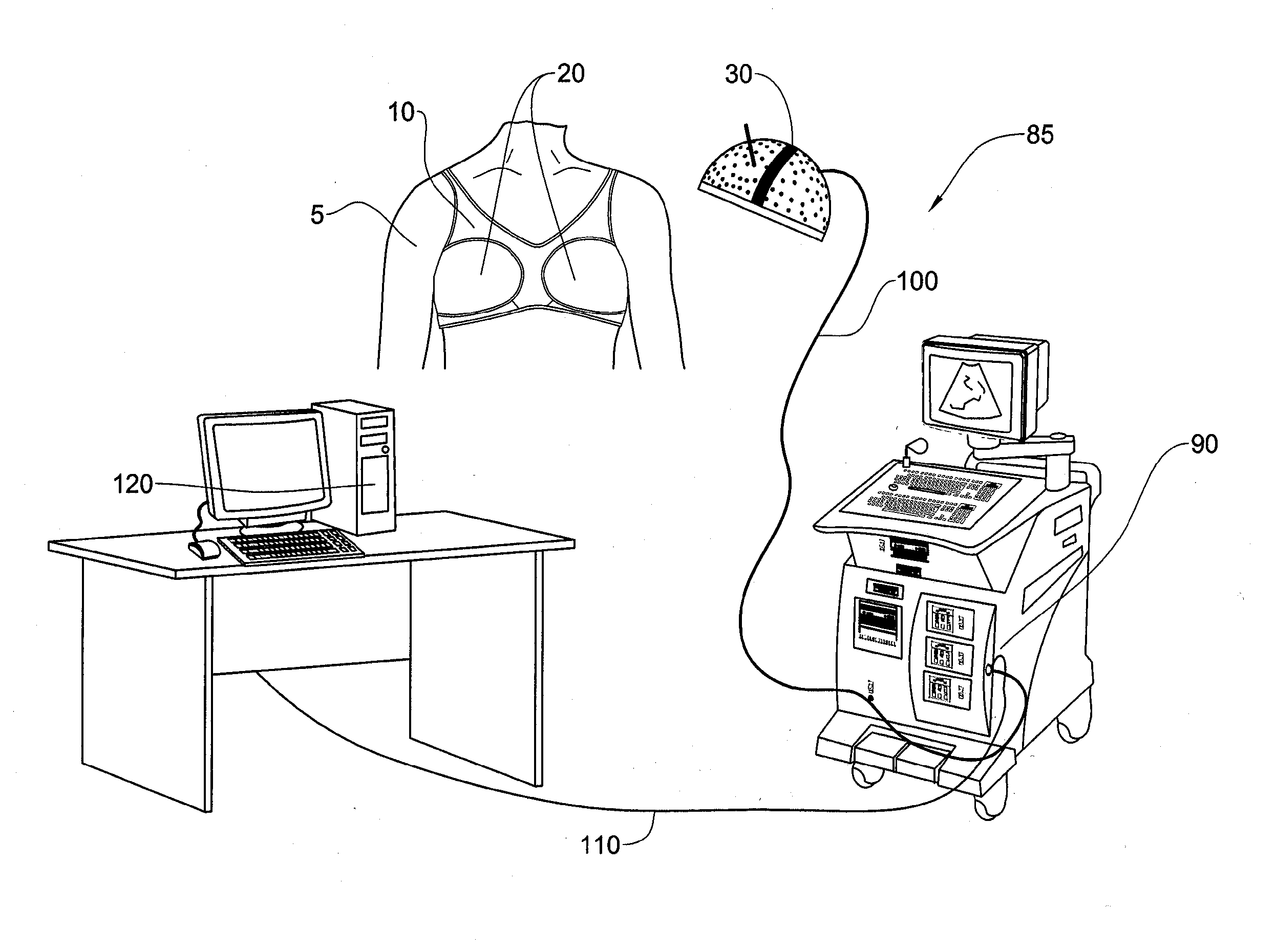System and method for ultrasonic examination of the breast
- Summary
- Abstract
- Description
- Claims
- Application Information
AI Technical Summary
Benefits of technology
Problems solved by technology
Method used
Image
Examples
Embodiment Construction
[0122]For the sake of clarity, and ease of description, the present invention will be described in relation to breast imaging, it being evident that the system and method of the invention can be modified to image any desired body part.
[0123]FIG. 1 shows a system 85 for ultrasound imaging of a breast in accordance with one embodiment of the invention. The system 85 comprises a dome shaped scanning device 30, described in detail below, configured to receive in its interior a breast of an individual 5. The scanning-device 30 is anchored to an ultrasound system 90 over a cable-assembly 100. A control-cable 110 connects the ultrasound system 90 to a workstation 120. The work station 120 may include a CRT screen 123 for displaying images. A user input device, such as a keypad 124 allows a user to input various parameters relating to the examination, such as personal details of the individual being examined, or the parameters of the ultrasound radiation (frequency, intensity, etc.).
[0124]I...
PUM
 Login to View More
Login to View More Abstract
Description
Claims
Application Information
 Login to View More
Login to View More - R&D
- Intellectual Property
- Life Sciences
- Materials
- Tech Scout
- Unparalleled Data Quality
- Higher Quality Content
- 60% Fewer Hallucinations
Browse by: Latest US Patents, China's latest patents, Technical Efficacy Thesaurus, Application Domain, Technology Topic, Popular Technical Reports.
© 2025 PatSnap. All rights reserved.Legal|Privacy policy|Modern Slavery Act Transparency Statement|Sitemap|About US| Contact US: help@patsnap.com



